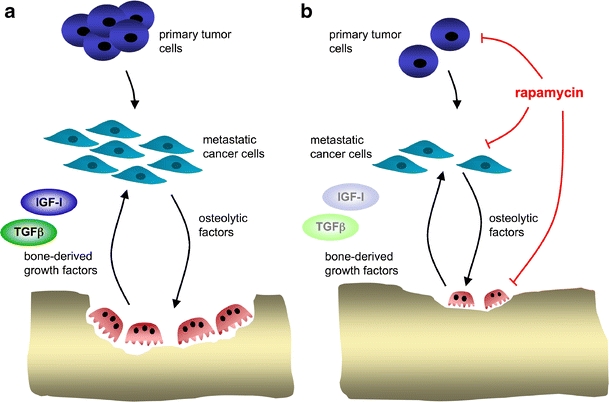Fig. 3.

Dual effect of rapamycin on cancer-induced bone loss. a In this hypothetical model, several types of tumor cells with high LIP expression (breast, prostate, lung, multiple myeloma) preferentially generate osteolytic metastasis by activating osteoclasts to release tumor-promoting growth factors (e.g., TGFβ, IGF-I). This results in a continuous cycle of stimulation of metastatic cells and bone resorption (derived from [56]). b The vicious circle between tumor and stroma (osteoclasts) may be interrupted by drugs that impinge on translational control, such as rapamycin or its derivatives
